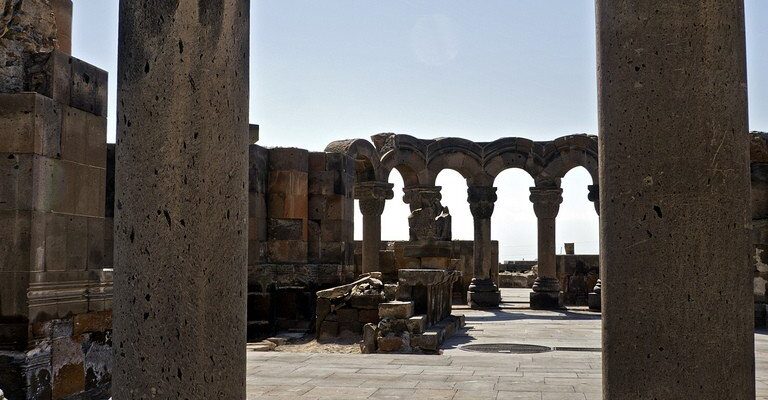Zvartnots Temple (Armenian Զվարթնոց)
Zvartnots is a temple of early medieval Armenian architecture located near Yerevan and Vagharshapat (Echmiadzin).
.Today, the territory of Zvartnots is an archaeological reserve and a museum opened in 1937, where one can see models-variants of the reconstruction of the temple, numerous sculptural fragments of impressive size. Well-preserved huge stone slabs with carved on them figures, sundials, bunches of grapes and pomegranate fruit.
The ruins of Zvartnots Temple are a UNESCO World Heritage Site.
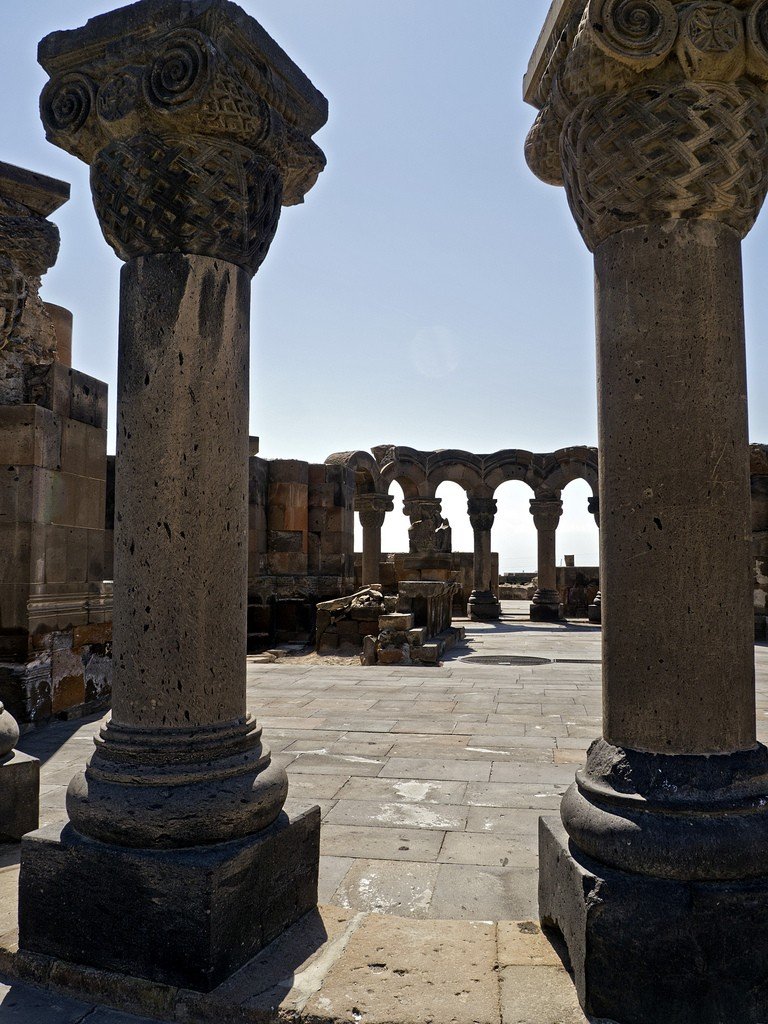
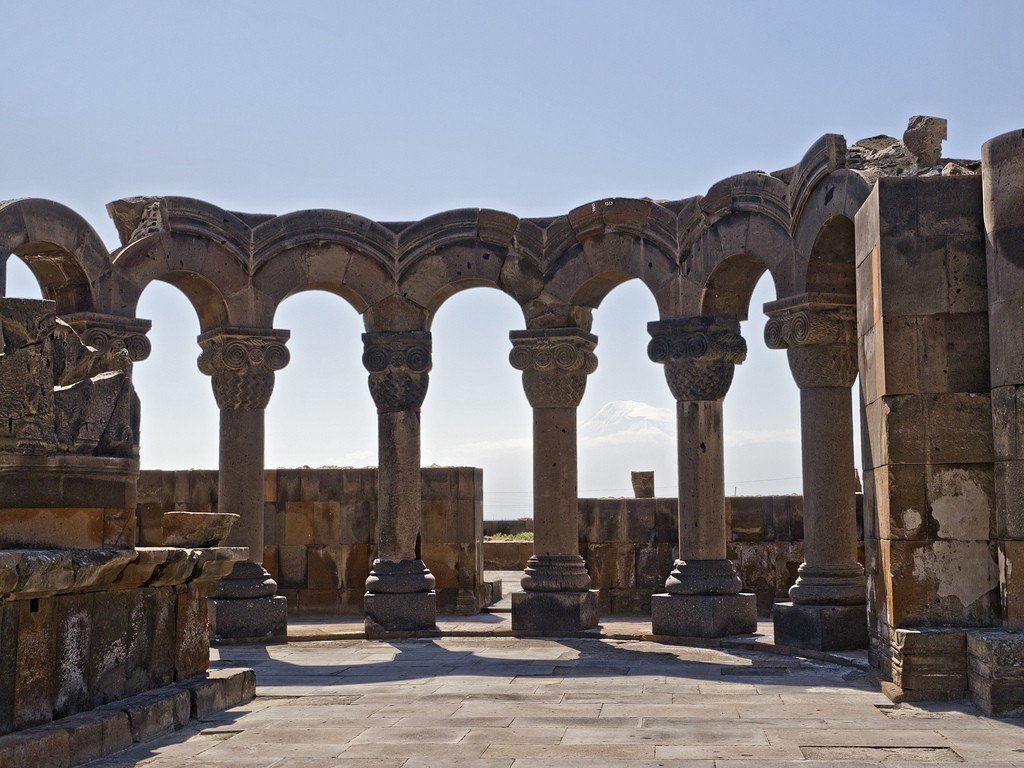
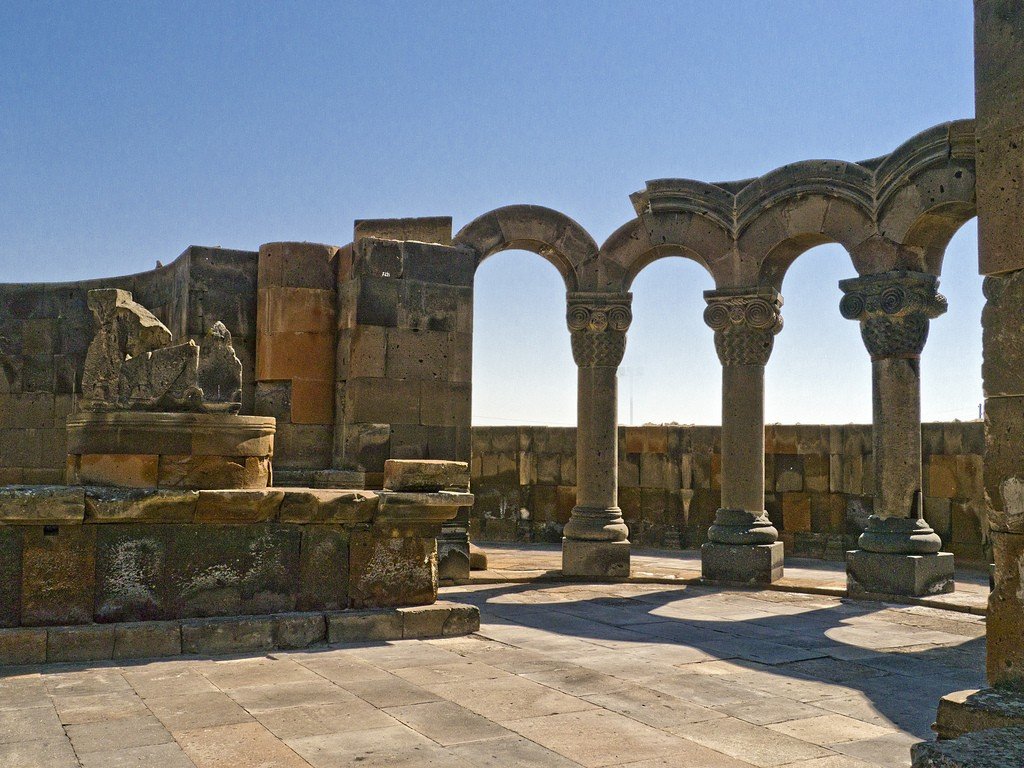
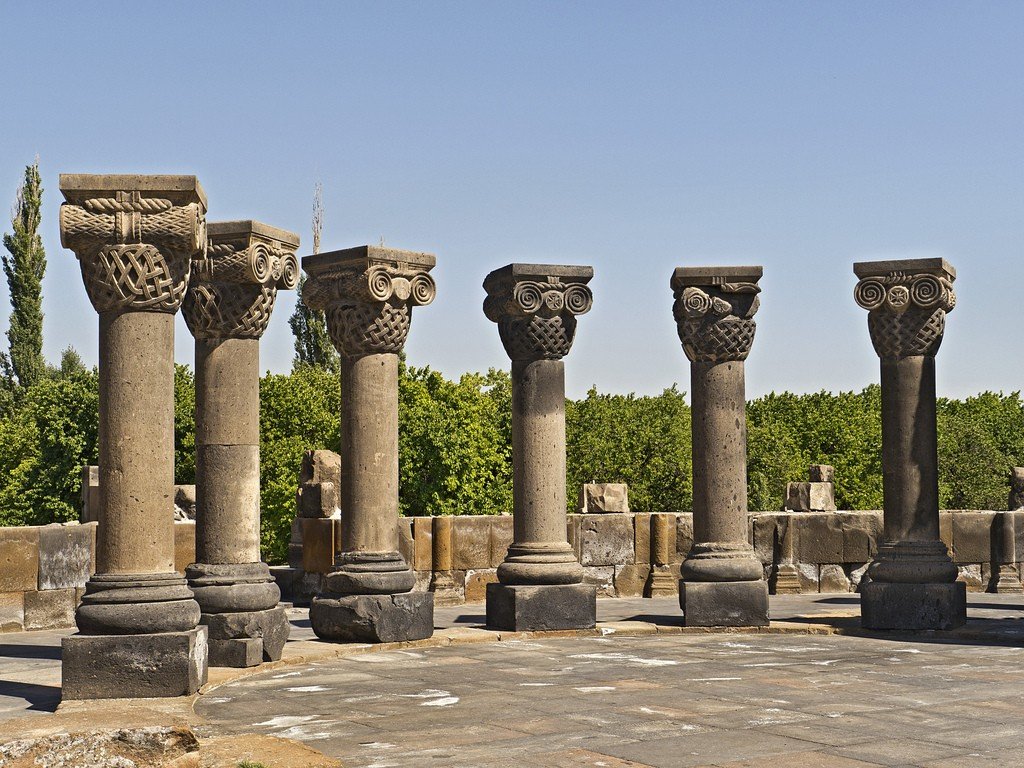
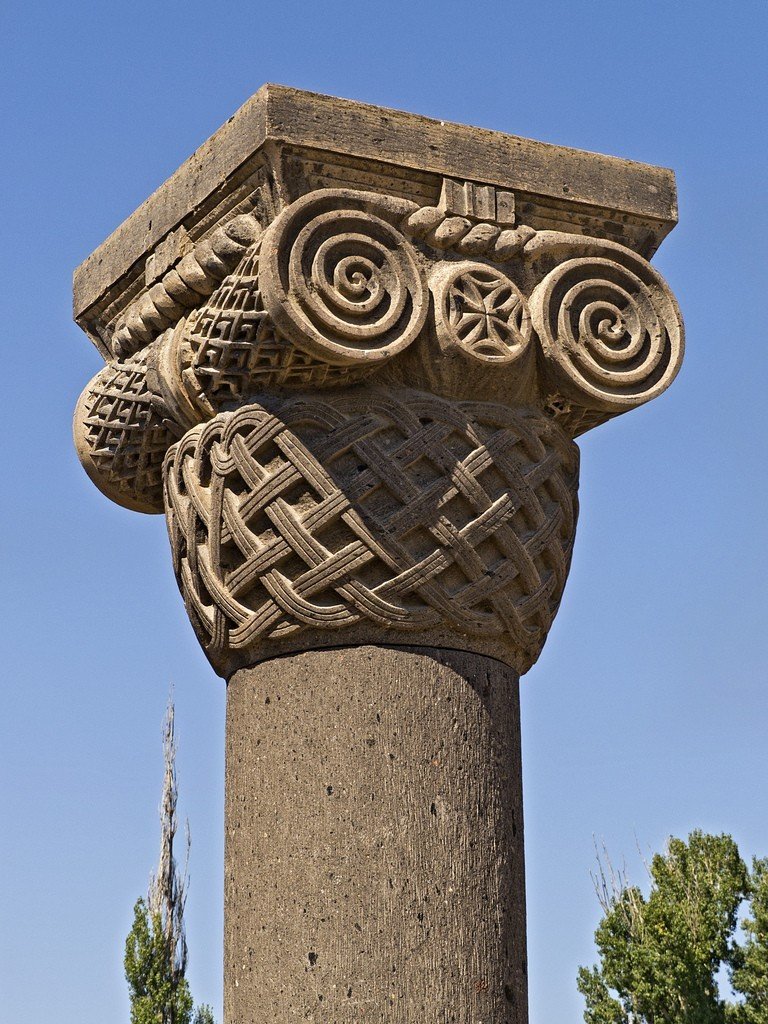
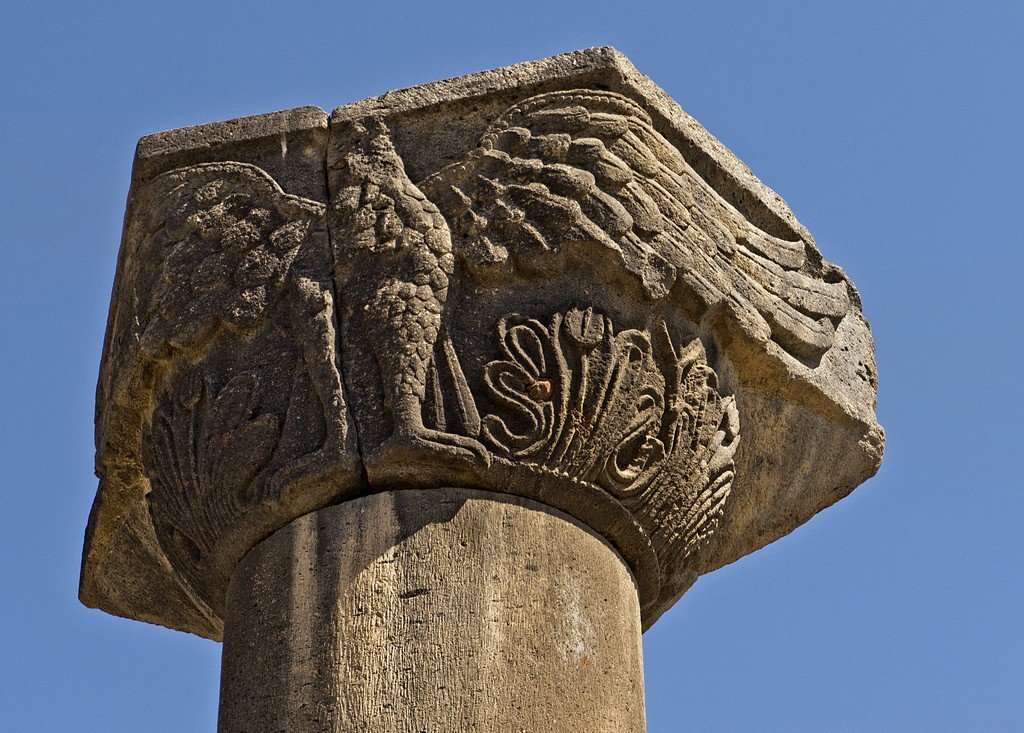
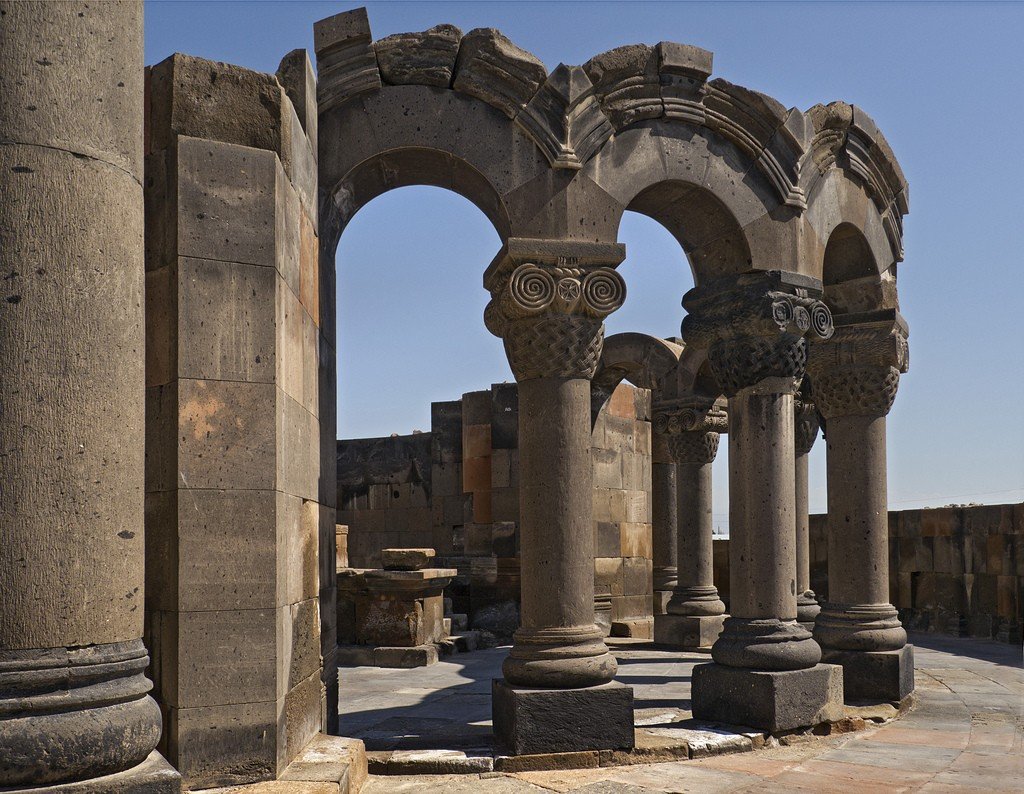
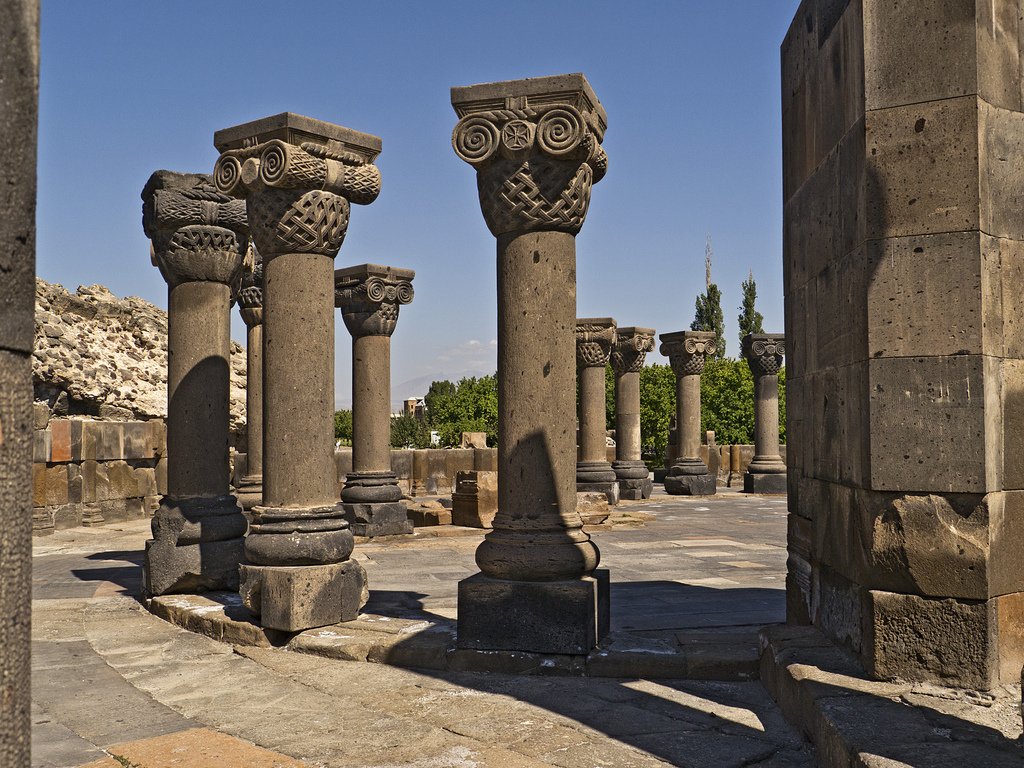
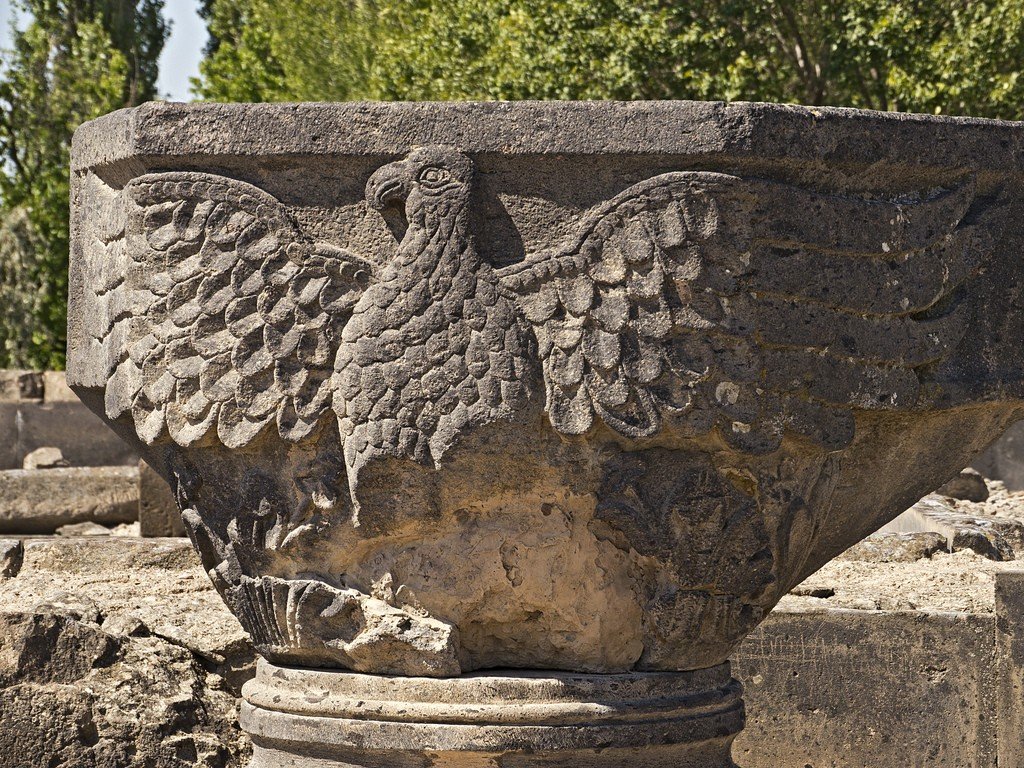
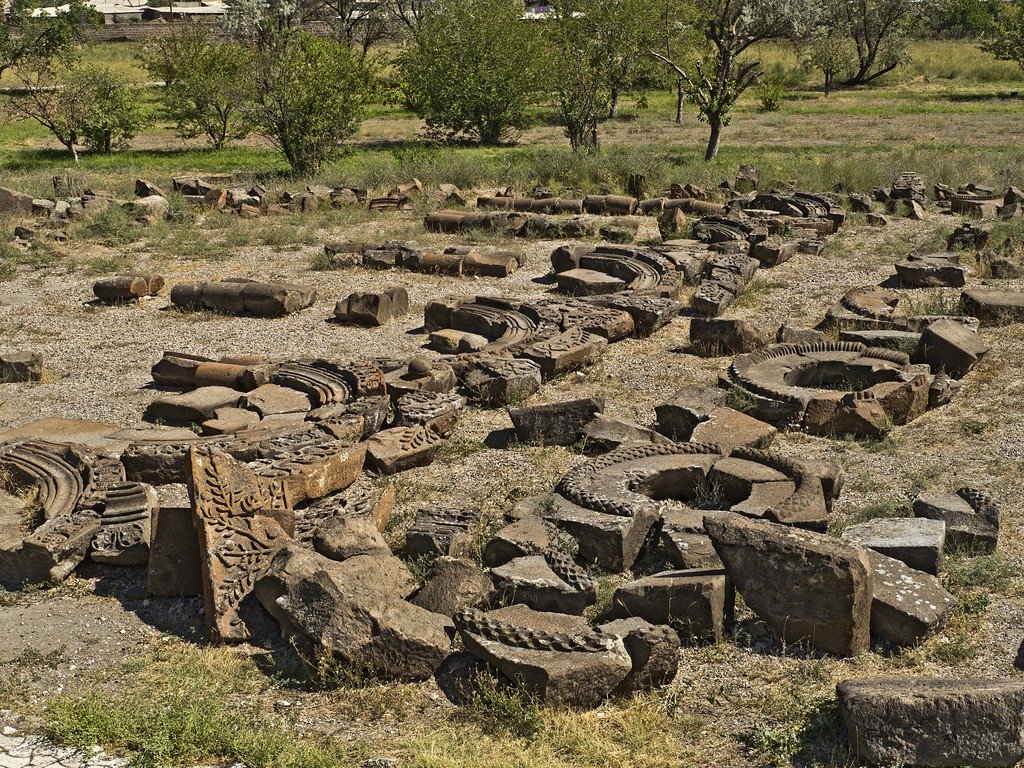
- Meaning of the name Zvartnots
- History of Zvartnots Temple
- Description of the Temple of the “Watchful Forces”
- Symbolism of Zvartnots architecture
- Symbolism of Zvartnots ornaments
- Other attractions of Zvartnots
- Tourists
Meaning of the name Zvartnots
Zvartun means “Angel” in ancient Armenian. Translated, Zvartnots means the temple of the “Heavenly Angels” or the temple of the “Vigilantes.”
Also Zvartnots is called the temple of Gregory the Prosvyatitel . According to legend, the temple was erected on the site of (and in honor of) the meeting between King Tiridates III and Gregory the Prosvyatitel released from the prison of Khor Virap.
.
History of Zvartnots Temple
The Zvartnots Temple was built by order of Catholicos Nerses III Tayetsi (also called “The Builder”) between 641 and 661, who decided to move his residence from Dvin to Vagharshapat (Echmiadzin).
.Byzantine Emperor Constant III who visited Armenia in 652 participated in the consecration ceremony of Zvartnots. He was so amazed by its beauty that he wished to build one in Constantinople. However, the architect who went with the emperor to the capital on the way died and a similar temple was never built in Constantinople.
.
In the X century Zvartnots was destroyed. About reasons of this event opinions of researchers are divided: the majority incline to the version about an earthquake and some constructive defects; others – see the reason in Arabian invasion.
.
Only a thousand years later, restoration work began in Zvartnots. Under the direction of architect Toros Toramanyan, in 1901-1907, the ruins of the temple were excavated and the project of Zvartnots was presented. To date, the first tier of the temple has been almost completely restored.
.The territory of Zvartnots is an archaeological reserve and a museum open since 1937.
.Description of the Temple of the Vigilantes
Zvartnots was a circular three-tiered domed structure with a height of 49 meters and a diameter of the first tier of 35.75 meters, built of tuff with shades of light gray to black. Partially preserved stepped pedestal surrounding the site on which the temple was located.
.
At the base of the temple laid out a cross inscribed in a circle. It was this cross that filled the interior space of the temple. The entire structure rested on four columns (pylons) twenty meters high. The second tier of Zvartnots on three sides was through. Its walls rested on six pylons. The whole composition ended with a pyramidal dome.
.There were five entrances to the temple.
.Symbolism of the architecture of Zvartnots
It is believed that the prototype of Zvartnots are the temples of Great Syria (temples in Apamea, Bosra and Seleucia). At the base of the Zvartnots temple an equilateral cross is laid out of exedras. Exedras are fastened by free-standing pylons in such a way that the cross and pylons are inscribed in a circle. Such a layout carries a coherent philosophical meaning. The circle is the perfect finished form. It represents the Cycle of manifestation, symbolizing both the beginning and the end. The vertical line of the cross represents masculinity and the horizontal line represents femininity. The cross in the circle means the manifestation of the World.
.The presence of 3 tiers symbolizes “Hierarchy” as the idea of hierarchy of beginnings.
.The first tier contains 64 faces (pylons), the second – 32 and the third – 16. As can be seen, all faces of Zvartnots are multiples of the number 8. It is this number that is the basis of the temple. From the eight faces we get an 8-pointed star, which is a six-pointed star of Vishnu (the seal of Solomon and David) with the unfolded 7th principle.
.Completing the structure is a pyramidal dome as a symbol of the completed local world order.
.Symbolism of Zvartnots ornament
The belt frieze of the first tier of the temple is also interesting. It is a pattern woven from pomegranate and grapevine bas-reliefs. The grapevine symbolizes cosmogenesis (the principle of development of worlds), and the pomegranate tree symbolizes anthropogenesis (the principle of human development).
.Also of interest are the columns with capitals in the form of eagles. The eagle is a symbol of the Sun.
.
Researchers pay special attention to bas-reliefs of people-builders in archivolts of the outer wall of the first tier. Some regard this as a tribute to the labor of the builders. Others are inclined to connect this image with the Gnostics calling themselves “free masons” building the Temple of Truth, whose ideas were later adopted by the Freemasons. In confirmation of their assumptions, it is even mentioned that Apollonius of Tyana visited Armenia.
.Other sights of Zvartnots
To the southwest of the Temple of the Heavenly Angels are the ruins of Nerses III’s patriarchal palace and his living quarters. The palace of the Catholicos consisted of two parts connected by a long corridor. These parts were located at right angles to each other. In the western wing there were halls for receptions and meetings, in the eastern wing – economic premises (including storerooms and baths) and cells of the temple servants.
.The palace of Nerses III was the largest of Armenia’s 7th century civil structures.
The palace of Nerses III was the largest of Armenia’s civil structures.Also here you can see the ruins of a winery. On its territory are laid out pottery of various capacities (up to 500 liters), in which wine was stored.
.
Tourists
Address
Armenia, Yerevan.
.Opening hours
- Tuesday-Saturday: from 10:00 to 17:30
- Sunday: from 10:00 to 15:00 .
- Day off: Monday.
How to get there
Take the M5 highway to Zvartnots Temple. It is better to use a cab, as the monument is located near the Zvartnots Airport.
